A Planet Skywatching Guide for 2017: When, Where & How to See the Planets
Introduction: Look Up in 2017!
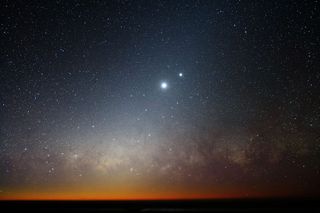
When can you see the planets at their best during 2017? This guide tells you everything you need to know to catch these astronomical sights in the night sky this year. It also tells you when a particular planet might be passing near to another planet or a bright star. Finally, it lists the constellations that each planet will occupy during the course of the year as well as the various circumstances — conjunctions, oppositions and elongations —on this year's schedule.
Mercury

Mercury, as an evening star, appears in the western sky and sets about an hour after sunset. As a morning star, it appears in the eastern sky, rising about an hour before the sun. There must be a clear, unobstructed horizon on these occasions. Mercury usually appears as a bright "star" with a yellowish or ochre hue. See it mornings from Jan. 5 to Feb. 14, evenings from March 23 to April 8, mornings from April 29 to June 7, evenings from July 5 to Aug. 17, mornings from Sept. 6 to Sept. 20, evenings from Nov. 2 to Dec. 4 and mornings from Dec. 20 to Dec. 31.
Mercury is brightest and easiest to spot in the evening sky between March 23 and April 8, and brightest and easiest to spot in the morning sky from Sept. 6 to 20.
Venus
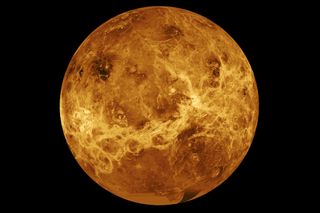
Venus, always brilliant and shining with a steady, silvery light, appears in the western sky at dusk from Jan. 1 to March 16, and in the eastern sky at dawn from April 3 through Nov. 13. From mid-February through early May, Venus is visible as a slender crescent through steadily held binoculars and telescopes. Venus is brightest in the evening sky from Jan. 30 through March 1, reaching its greatest brilliance on Feb. 17. Venus is brightest in the morning sky from April 15 through May 14, reaching its greatest brilliance on April 30.
The planet passes to the north of the much-fainter bluish star Regulus (in Leo, the lion) on the morning of Sept. 20; Venus and the star appear low in the east-northeast predawn sky, separated by only half a degree. On the morning of Oct. 5, Venus passes only about one-quarter of a degree north of Mars, the Red Planet appearing only 1/191 as bright. And before disappearing into the bright morning twilight on the morning of Nov. 13, Venus passes only 0.3 degrees north of Jupiter, the two planets making for a striking sight, standing side by side low in the east-southeast sky in the brightening dawn sky.
Mars
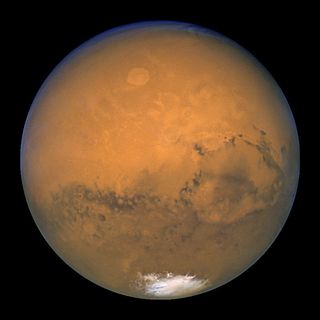
Mars, shining like a "star" with a yellow-orange hue, can vary considerably in brightness. See it evenings from Jan. 1 through June 6 and mornings from Sept. 11 through Dec. 31. This is an "off" year for Mars, as the planet never becomes very bright or conspicuous. It's at aphelion (its farthest point from the Sun) on Oct. 7, when it is 154.9 million miles (249.3 million kilometers) from the sun and an even more distant 235 million miles (378 million km) from the Earth.
Despite this rather gloomy outlook, one should keep in mind that next year brings an exceptional apparition of Mars; in fact, in late July 2018, the Red Planet comes closer to Earth than at any other time since Mars' historically close approach of Aug. 2003. Along with its close approach to Venus on Oct. 5, Mars also teams up with Mercury on the morning of Sept. 16, the two planets coming to within less than one-third of a degree of each other low in the eastern sky.
Jupiter
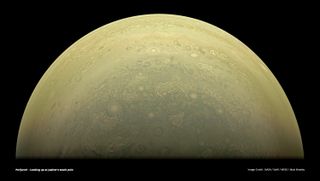
Jupiter appears quite brilliant, with a silver-white luster. Spot it mornings from Jan. 1 to April 6, evenings from April 7 to Oct. 6 and mornings again from Nov. 13 to Dec. 31. For much of 2017, Jupiter shines like a dazzling, nontwinkling, silvery "star" against the relatively dim star background of Virgo, the maiden, eventually crossing into Libra, the scales, on Nov. 15. Jupiter passes well to the north of bluish Spica, the brightest star of Virgo, on Sept. 12.
Brightest in 2017: March 28 to April 19. Jupiter is at opposition to the Sun on April 7. As the planet begins to emerge from out of the bright dawn twilight, Jupiter passes very close to Venus — just one-third of a degree separating them — on Nov. 13.
Saturn
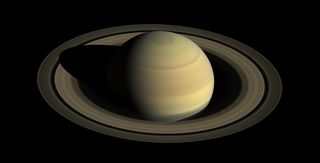
Saturn shines like a yellowish-white "star" of moderate brilliance. The famous rings are visible only in a telescope magnifying at least 30 power. They were turned edge-on (or very nearly so) toward Earth through most of 2009 and at times were quite difficult to observe. The rings have now "opened-up" spectacularly to skywatchers' view and are at their maximum tilt toward Earth — a Saturnicentric latitude of 26.98 degrees — on Oct. 17. Saturn starts 2017 in the nonzodiacal constellation of Ophiuchus, the serpent holder, and then crosses over into Sagittarius, the archer, on Feb. 23. Retrograde motion causes the ringed planet to cross back into Ophiuchus on May 18, where Saturn will remain until it crosses back into Sagittarius on Nov. 18. See it mornings from Jan. 1 to June 14 and evenings from June 15 to Dec. 4.
Brightest in 2017: June 12 to June 17. Saturn is at opposition to the sun on June 15.
Uranus
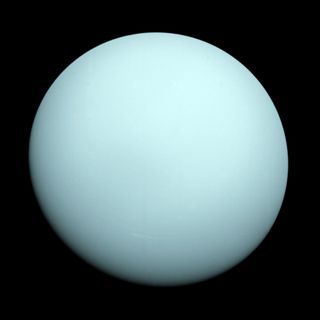
Uranus can be glimpsed as a naked-eye object by people who are blessed with good eyesight and a clear, dark sky, as well as a forehand knowledge of exactly where to look for the planet. It shines at magnitude +5.7 and can be readily identified with good binoculars. A small telescope may reveal Uranus' tiny, greenish disk. The planet spends 2017 in Pisces. See it evenings from Jan. 1 to March 29, mornings from April 30 to Oct. 18 and evenings again from Oct. 19 to Dec. 31.
Brightest in 2017: Aug. 27 to Dec. 7. Uranus arrives at opposition to the sun on Oct. 19. Mars passes less than 0.6 degrees from Uranus on the evening of Feb. 26, providing a good benchmark for locating this seventh planet from the sun.
Neptune

Neptune spends 2017 in the constellation of Aquarius. At a peak magnitude of +7.8, this bluish-hued world is visible only with stargazing binoculars or a telescope. Spot it evenings from Jan. 1 to Feb. 15, mornings from March 18 to Sept. 4 and evenings again from Sept. 5 to Dec. 31.
Brightest in 2017: July 13 to Oct. 28. Opposition is on Sept. 5. On the evening of Jan. 12, you can try to use Venus to guide you to Neptune, when Venus is situated less than 0.4 degrees to the upper right of Neptune. Good binoculars or a small telescope may reveal the solar system's most distant planet, but keep in mind it will be shining about 80,000 times fainter than Venus!
Joe Rao serves as an instructor and guest lecturer at New York's Hayden Planetarium. He writes about astronomy for Natural History magazine, the Farmer's Almanac and other publications, and he is also an on-camera meteorologist for Fios1 News in Rye Brook, NY.
Join our Space Forums to keep talking space on the latest missions, night sky and more! And if you have a news tip, correction or comment, let us know at: community@space.com.
Get the Space.com Newsletter
Breaking space news, the latest updates on rocket launches, skywatching events and more!

Joe Rao is Space.com's skywatching columnist, as well as a veteran meteorologist and eclipse chaser who also serves as an instructor and guest lecturer at New York's Hayden Planetarium. He writes about astronomy for Natural History magazine, the Farmers' Almanac and other publications. Joe is an 8-time Emmy-nominated meteorologist who served the Putnam Valley region of New York for over 21 years. You can find him on Twitter and YouTube tracking lunar and solar eclipses, meteor showers and more. To find out Joe's latest project, visit him on Twitter.
